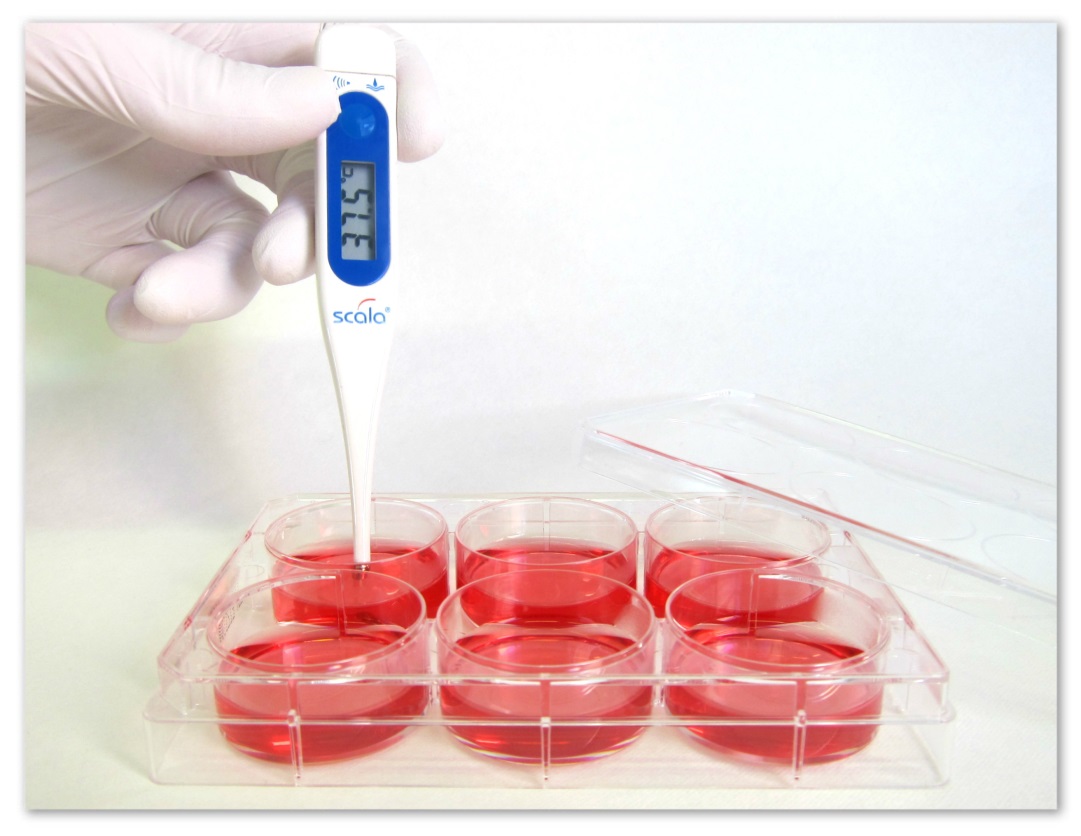Using stiffness measurements as a biological indicator
The first thing most people do if they are feeling unwell is to take their temperature. From a raised body temperature alone we cannot deduce what exactly is happening in the body, but it is a definite sign to pay attention and maybe see a doctor.
Measuring the stiffness of a biological sample is a very similar process. Tissue stiffness or how easy it is to bend depends on the mechanical properties of individual cells and their environment. Changes in stiffness point towards changes in the underlying biology and biochemistry of cells.

Like fever, there is not only a single cause, but it highlights that there is something going on that we should have a look at.
I use an atomic force microscope (AFM) to measure the stiffness of tissue. The AFM has a very tiny tip which rasters over the surface of the sample and indents it with tiny forces in the range of nano-Newtons; this is well beyond what human skin can feel. At each point in the raster the AFM records force over indentation and from that curve I can calculate the stiffness at that very point. Putting it all together creates a ‘stiffness map’ of the area I have measured which looks similar to a geographical map.
This allows me to compare the health status of tissues under various conditions. In my project I characterize amongst other things how lack of oxygen, which has severe medical consequences within minutes, changes tissue stiffness. I am also looking at various culture conditions to see how these influence tissue growth in an artificial environment, which is of interest for growing new organs in the lab. At the end of my PhD I hope to be able to characterize some matrix systems that could potentially be used for growing synthetic organs.

